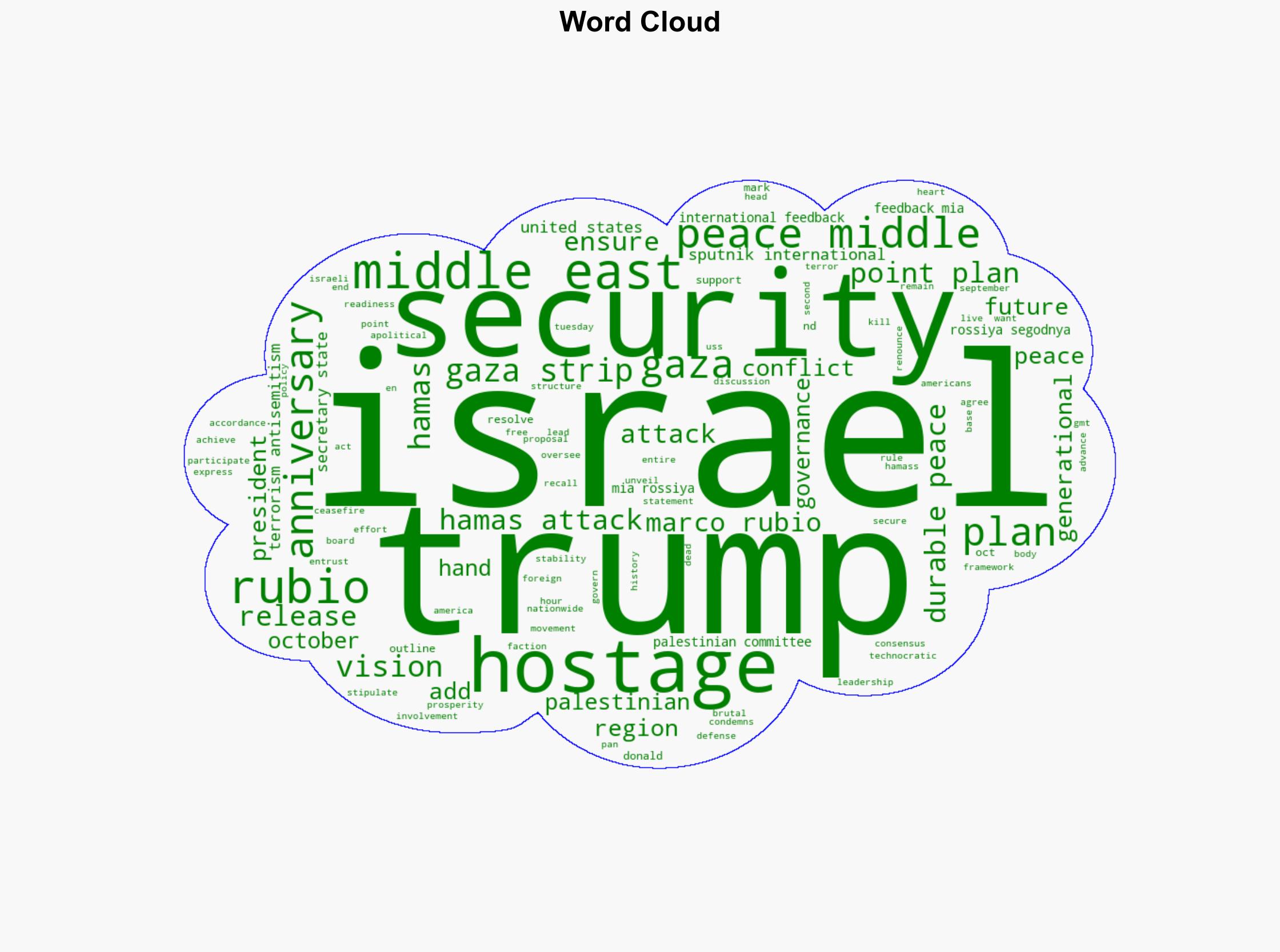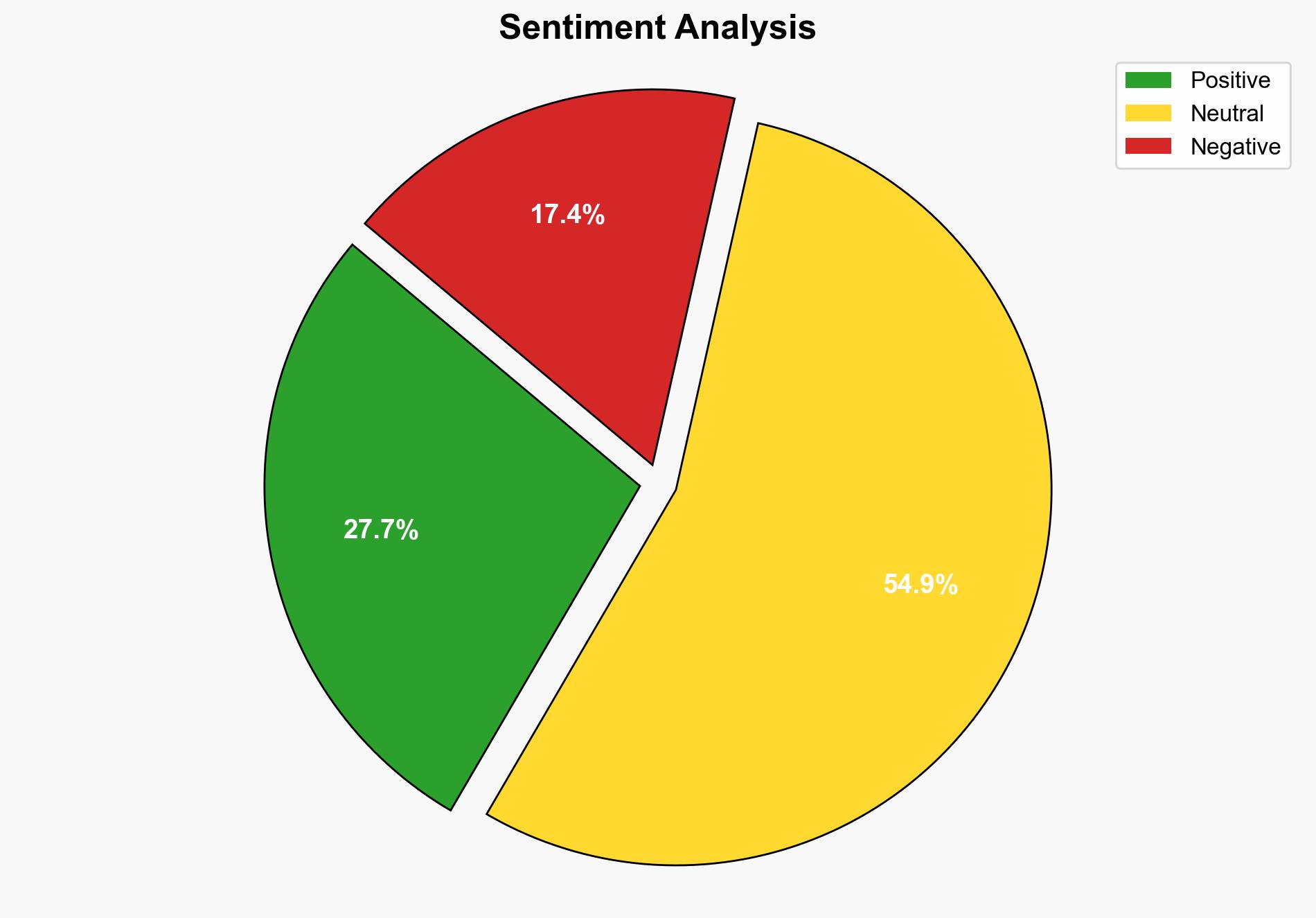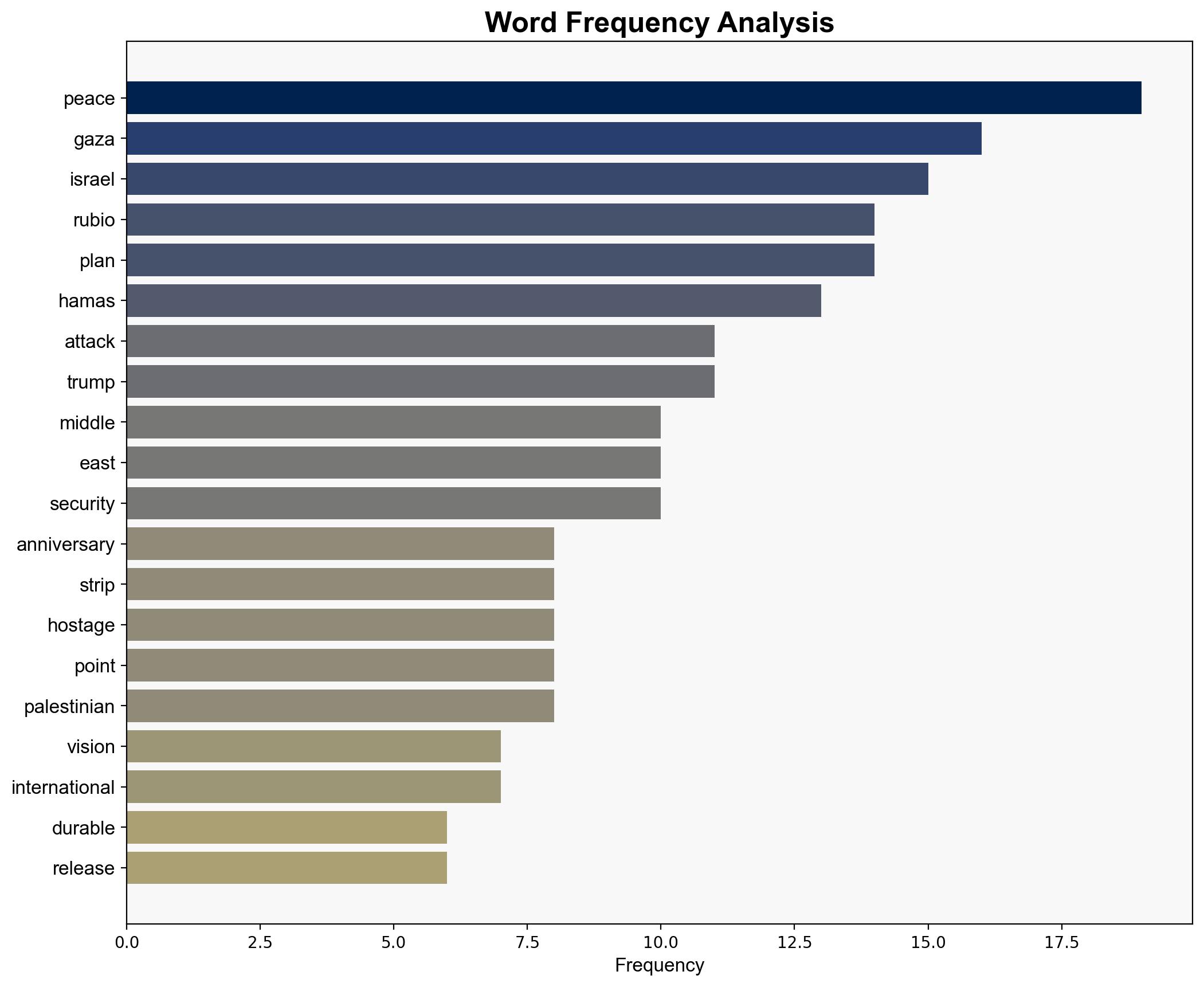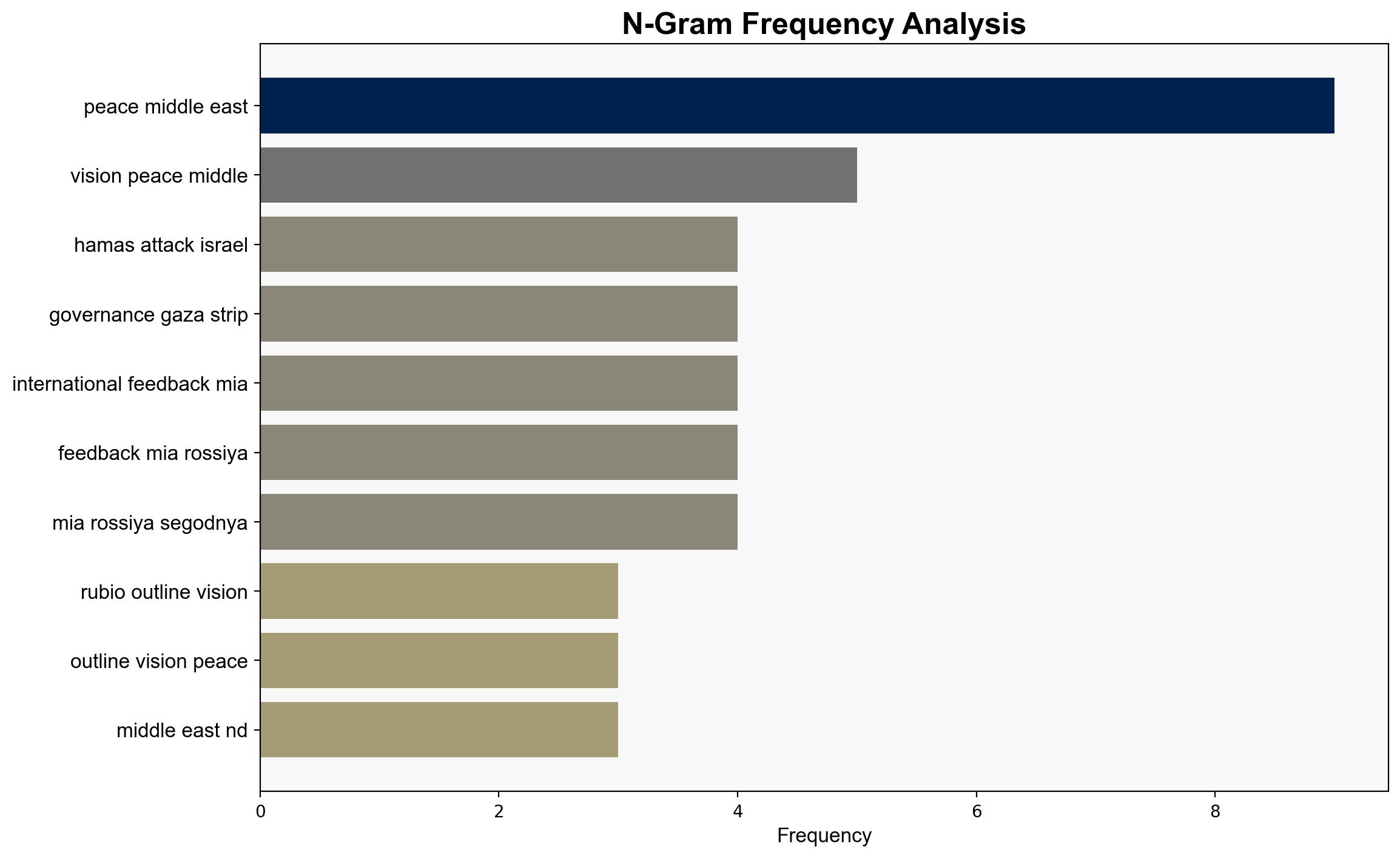Rubio Outlines US Vision for Peace in the Middle East on 2nd Anniversary of Oct 7 Attack – Sputnikglobe.com
Published on: 2025-10-07
Intelligence Report: Rubio Outlines US Vision for Peace in the Middle East on 2nd Anniversary of Oct 7 Attack – Sputnikglobe.com
1. BLUF (Bottom Line Up Front)
The most supported hypothesis is that the United States, under the influence of Marco Rubio and Donald Trump, is pursuing a strategic plan to stabilize the Middle East by promoting a new governance structure in Gaza and ensuring Israel’s security. This hypothesis is supported by the alignment of Rubio’s statements with Trump’s previously outlined plan. Confidence level: Moderate. Recommended action: Monitor developments in US diplomatic engagements in the region and assess responses from key stakeholders, including Hamas and Israel.
2. Competing Hypotheses
1. **Hypothesis A:** The US is genuinely committed to achieving durable peace in the Middle East by supporting a technocratic governance structure in Gaza, as outlined by Rubio and Trump. This approach aims to reduce Hamas’s influence and ensure Israel’s security.
2. **Hypothesis B:** The US’s outlined vision is primarily a political maneuver to consolidate domestic and international support, with limited practical commitment to implementing the proposed governance changes in Gaza. This could be a strategic positioning rather than a concrete plan.
Using ACH 2.0, Hypothesis A is better supported due to the consistency between Rubio’s statements and Trump’s plan, as well as the historical context of US policy in the region.
3. Key Assumptions and Red Flags
– **Assumptions:** The US assumes that a technocratic governance structure in Gaza will be accepted by all Palestinian factions and that Hamas will comply with the proposed changes.
– **Red Flags:** Lack of explicit support or agreement from Hamas and other Palestinian entities raises questions about the feasibility of the plan. The absence of detailed implementation steps suggests potential gaps in the strategy.
– **Blind Spots:** The intelligence does not address the potential reactions from regional powers such as Iran or the broader Arab world, which could significantly impact the plan’s success.
4. Implications and Strategic Risks
– **Geopolitical Risks:** Failure to secure broad regional support could lead to increased tensions and undermine US credibility.
– **Economic Implications:** Prolonged instability in the region could affect global oil markets and economic interests.
– **Potential Escalation:** If the plan is perceived as biased towards Israel, it could exacerbate anti-US sentiments and lead to increased terrorist activities.
5. Recommendations and Outlook
- Engage with regional stakeholders, including Egypt and Jordan, to build a coalition supporting the governance transition in Gaza.
- Develop contingency plans for potential backlash from Hamas and other factions.
- Scenario Projections:
- Best Case: Successful implementation leads to reduced tensions and increased regional cooperation.
- Worst Case: Plan fails, leading to increased violence and destabilization.
- Most Likely: Partial success with ongoing challenges and negotiations.
6. Key Individuals and Entities
– Marco Rubio
– Donald Trump
– Hamas
– Israel
7. Thematic Tags
national security threats, cybersecurity, counter-terrorism, regional focus




